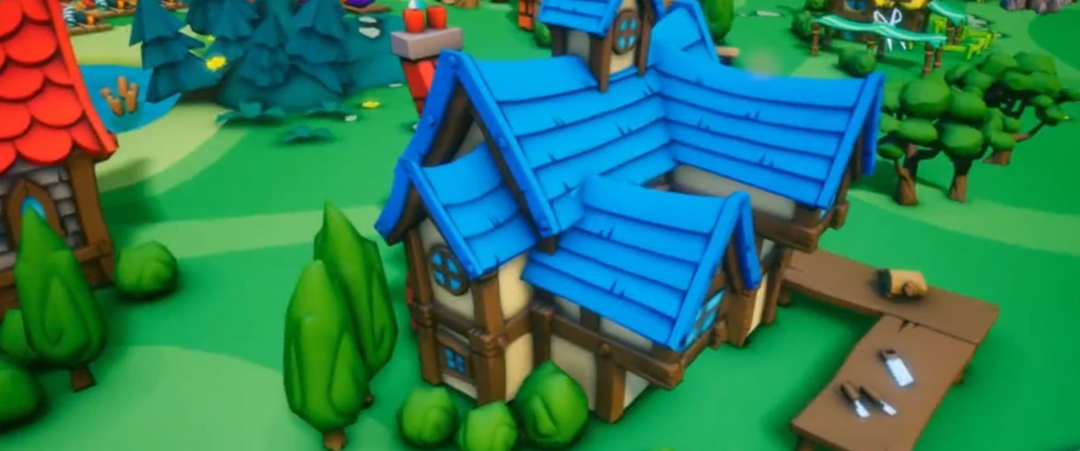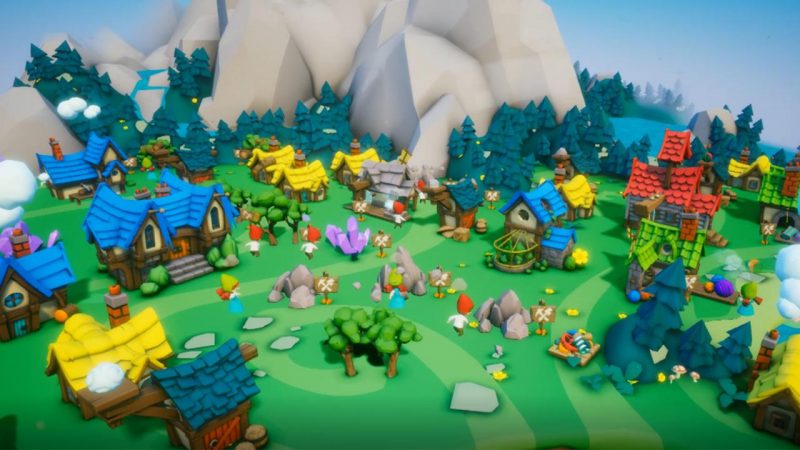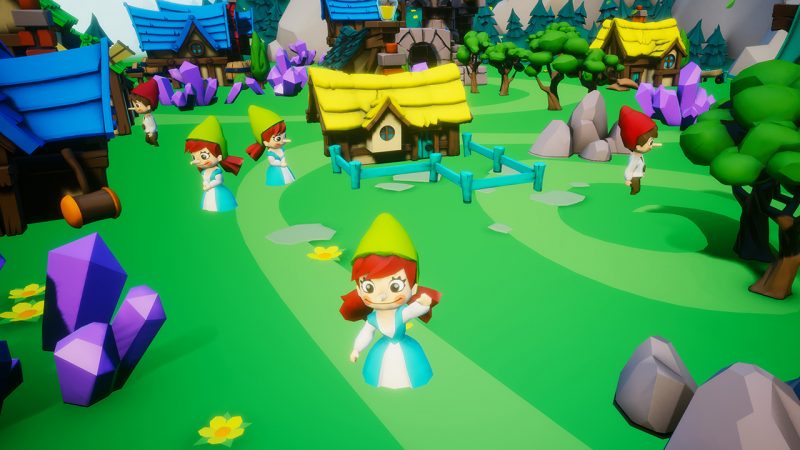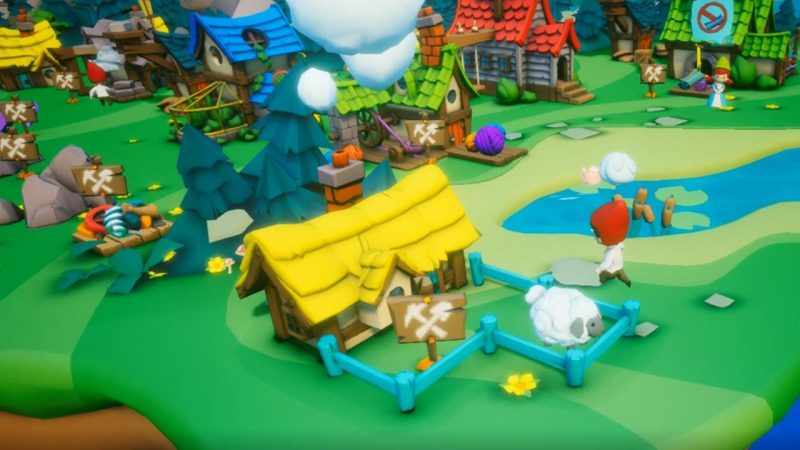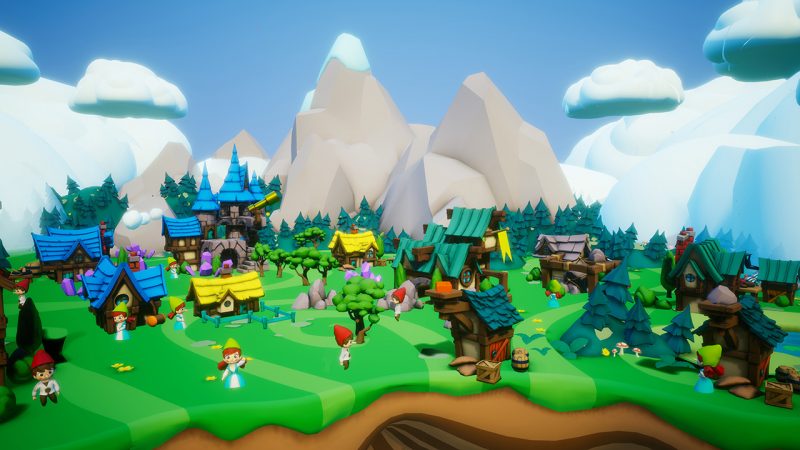A Handful Of Keflings Review (HTC Vive/Oculus Rift)
For the purposes of transparency, this review was created using a code provided by the company or their respective PR company. The use of a review code does not affect my judgement of the game.
Back on the Xbox 360 the team at NinjaBee brought A Kingdom of Keflings and A World of Keflings to the marketplace – two games I enjoyed. Now they have created A Handful of Keflings for the HTC Vive and Oculus rift, but how does the game transfer into VR?
One element that shocked me with A Handful of Keflings was the removal of a story/campaign and multiplayer modes that have been present in the previous instalment’s. In this instalment of the game you are only presented with a sandbox mode, and the map is a pretty good size when moving along it. But, it removes some of the direction of the game people who previously played the 360 versions will miss.
The team have not changed the gameplay at all, which I thought was the addicting part of the Kefling games on the 360. If you did not play these the idea is growing your Kefling village. You this by commanding the Keflings to do all the work needed to be able to build up the village with more houses (granting more Keflings) and buildings need to have a functioning village.
In order to progress your village you need to start by building a few houses to collate some Keflings to command from your godlike position, looking over them from the sky. As these collect some materials needed, there are four overall as you progress – which are wood, stone, gems and wool. You can start by collecting the basics of these materials to build more buildings, which will give you more options when it comes to what is needed to progress in the game. For example you will be able to build a woodcutter in order to make planks from the collected wood, with planks being needed later to build your farm to unlock the wool material.
When it comes down to the buildings, you will need to unlock the blue-prints to do this – this is the only progression system in the game really. How this system works you will see a building tree, which will show you what you have to make to open the next branch of that tree – overall there is fifteen blue-prints in total. Once the blue-print is unlocked hovering over each part you need to build, will show the information on what is needed to construct that part. In order to get the materials for these parts, you might then need to start assigning your Keflings jobs to mine more of one type of material – adding some slight strategy to the game. But, if you have your Keflings assigned well and also have unlocked the storage buildings it will soon manage itself without much input from yourself. Lastly you will need to place the items in the order shown on the blue-print in order to complete the construction and for the building to appear – this uses a grid based system.
It all becomes a bit easy as you get further into it, which could have been resolved by including invading enemies and/or natural disasters – which is offered by similar godlike management games; for example Tethered. Also, some micromanaging of the Keflings, for example the need to let them rest or them getting hungry. But, none of this happens and they can just get on with what you request them to do happily. This would have offered a bit more of a challenge to the game, but A Handful of Keflings seems to be aimed at a younger audience.
As you jump into A Handful of Keflings it is a nice and colourful animated world you are looking at, and the presentation style has transferred over to VR nicely. However, in this game in the series it looks like the Keflings are more based off the garden gnome aesthetic. This all works with the idea of what the game is doing, and gives the feeling again it is aimed towards a younger audience. When it comes to sound there is a looping soundtrack that is quite relaxing and although it is repeated on a loop it does not get annoying – where this is usually the case in games. Then you have the little squeaks when you select a Kefling to assign to a job and the noises from the materials being collected. So, where there is not an overly huge use of sound in the game, it suits the ambience of the game’s setting.
When controlling the game it is all very simple, and little buttons are actually required. The only thing the left-handed trackpad/touch controller will do is move you along the world, to open up more for use. This is done by holding the trigger down and swiping your hand either left or right – this action can also be completed with right-handed controller. Then the only other thing you will be doing is looking at what you want to select and use the trigger on the right-handed controller to select it. That is your controls, very easy but all the game really needed. The game can be played from a seated on standing position, but personally I found you might as well play seated, because there is no real reason to or benefit from playing from a standing position.
As mentioned previously this is a sandbox mode only and the world is huge, however, the world is only displayed horizontally – hence the swiping movement to show more of it. Taking this approach into the mind the game could have worked perfectly without VR, because the game really fails to take advantage of the 360 field of view offered by VR. Meaning if you turn and look behind yourself you just see sky rather than another world/village, which is a shame with what the game could have offered. The only real use of the VR is you can get close to the village/Keflings, but there is no reason to do that.
Overall if you have your Keflings well assigned you will have all the blue-prints unlocked in under one hour of playtime. Then you can only really build the same buildings a number of times before you start to think what’s the point of continuing. Meaning the game is not really going to keep your appeal for too long, unless you have a younger person in your household that might enjoy the game.
Conclusion
A Handful of Kelfings could have offered a lot, but unfortunately falls short in most areas. Lacking a story/campaign and multiplayer mode leaves little to the game. The games only progression comes in unlocking the next blue-print which can be done in little under and hour, due to the lack of any management of the Keflings being needed. The game could have been made a lot more strategic if your Keflings needed rest and/or got hungry, and if something like natural disasters or enemies effected your village – meaning you could lose stock or have to rebuild. With my love for the previous entries on the Xbox 360, this really left me disappointed.
Developers: NinjaBee

